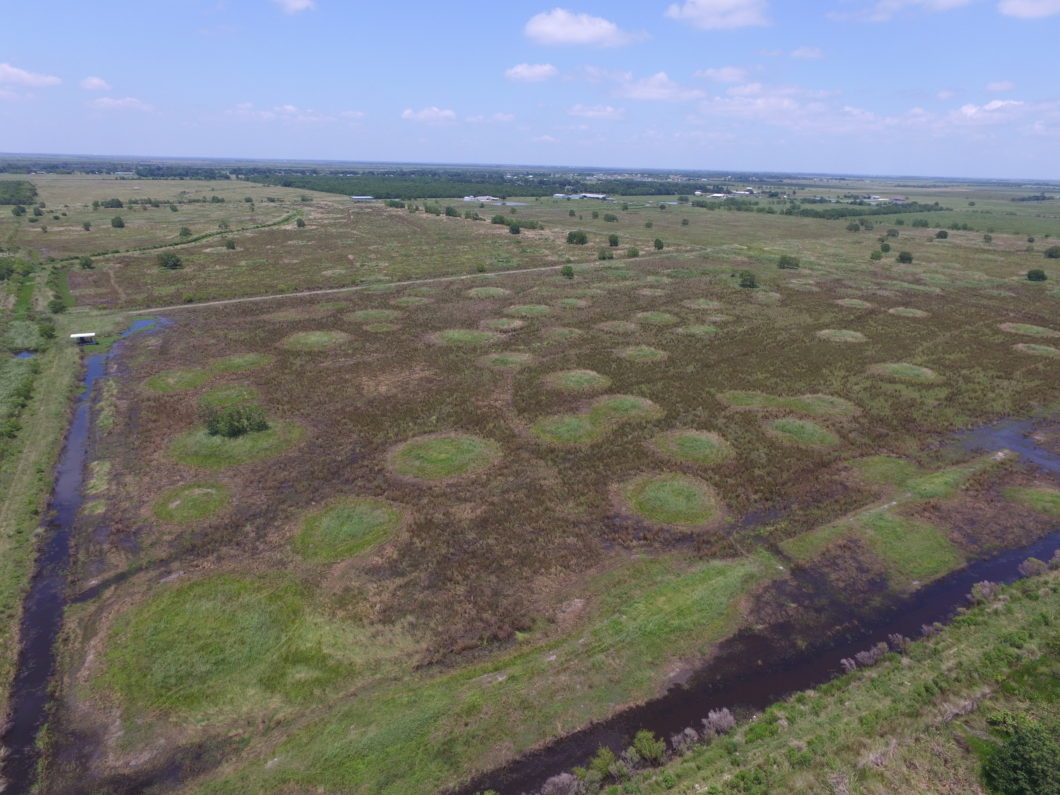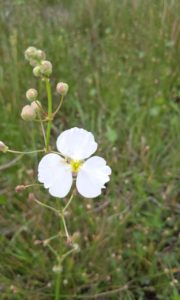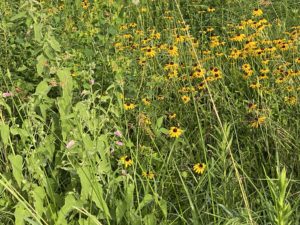Willow Lake Mitigation Bank
Cameron Parish, Louisiana

Drone aerial of pimple mounds and existing wet pasture (photo: Jacob James)

Iris virginiana (Photo Credit: Pamela Fetterman)

Sagittaria spp. in bloom (Photo Credit: Danny Moran)
EcoGENESIS designed and successfully guided the client, Willow Lake Mitigation, LLC from feasibility through to the Final MBI for this + 271-acre coastal prairie and freshwater-intermediate marsh bank in Cameron Parish, Louisiana. Working closely with our engineering partners PanAmerican Engineering and both the Louisiana’s Office of Coastal Management and the New Orleans District USACE and inter-agency review team, our expert staff and collaborators successfully secured the Coastal Zone construction permit in 2017, and the Nationwide 27 permit in July of 2020 with the MBI currently finalized and going through the signatory process.
Formerly improved wet pasture leveed off from natural, existing marsh in the southern part of the site, the project will restore and enhance 154 acres of freshwater-intermediate marsh and restore 117 acres of coastal prairie habitat dominated by high conservation value species. The property is unique in containing in-tact pimple mounds interspersed throughout the targeted habitat types, offering a true matrix of upland and wetland habitats that will result in vegetatively diverse and species rich environments providing pristine pollinator and wetland habitat. Hydrologic restoration will occur through ditch backfilling, removal of spoil, removal of levees and cessation of pumping. Vegetative restoration will be accomplished through invasive species treatments, seeding, planting, and prescribed burning. This project will serve to help restore and preserve vanishing coastal habitats due to agricultural conversion to pasture and conversion of marsh to open water from subsidence and erosion.

wet coastal prairie (Photo Credit: Pamela Fetterman)

Pontederia cordata (Photo: Pamela Fetterman)
Few areas of functioning coastal prairie (Cajun Prairie) remain in Louisiana, and historically the coastal prairie was estimated at 2.5 million acres with less than 100 acres of this habitat remaining as of 1999 (USGS, 1999). Both wet prairie and mesic coastal prairie habitats are fire dependent and require fire for seed production and germination. Due to the presence of long-lived, flowering perennials and annuals, prairie provides prime pollinator habitat, and may be an important key to restoring imperiled, native pollinator species by providing an important source of pesticide-free nectar and larval plants. In addition, the thick “sod” formed by both wet and mesic prairie habitats anchors the fine, clayey sediments of the coastal plain, as do the intertwined roots of marsh grasses and rhizotomous/stoloniferous plants abundant in marsh habitats.
Coastal marsh and other wetland habitats are disappearing from Louisiana due to land loss, with an estimated 1,900 square miles of land now submersed compared to 1930 (CPRA, 2020). Habitat restoration projects such as Willow Lake, which return to the landscape historically occurring marsh and wet prairie previously converted into improved pasture provide an important antidote to this loss. Together, in-tact coastal prairie and marsh habitats provide one of the first lines of defense against coastal erosion, storm damage and land loss.

wet coastal prairie (Photo Credit: Pamela Fetterman)
